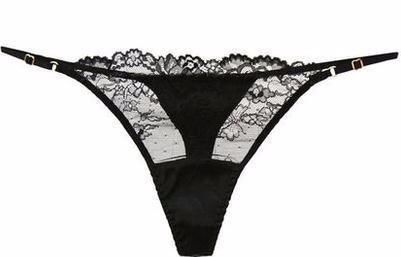
Let’s talk about a delicate but common household sight: doing the laundry and noticing persistent yellow stains on a pair of underwear. It’s easy to dismiss it as a simple laundry issue or a sign of poor hygiene. But when these stains are a regular occurrence, they’re more than just a nuisance; they’re a message. Yellow stains on underwear? Your body is excreting excess… waste products through your sweat and urine, and the composition of those fluids has changed.
Before you worry, let’s be clear: this is rarely a five-alarm emergency. But it is a valuable clue about what’s happening inside your body. Our sweat and urine are like a report card on our internal environment, and a yellowish stain is often that report card saying, “We need to make some adjustments.”
The Two Main Culprits: Sweat and Urine
First, it helps to know the source. The stain could be from:
- Apocrine Sweat: We have two types of sweat glands. The eccrine glands cover most of our body and produce mostly water and salt to cool us down. But in the groin and armpits, we have apocrine glands. This sweat is thicker and contains proteins and fats. When this sweat sits on fabric and reacts with bacteria, it can turn a yellowish color. This is a normal process, but it can be more pronounced if the sweat is more concentrated.
- Urine: For both men and women, small amounts of urine can escape or be left behind after using the restroom. The color and concentration of that urine are key.
So, what causes these fluids to leave a more prominent yellow stain? Here are the most common reasons.
Your Body is Excreting Excess…
1. Urobilin and Other Waste Products
The most direct answer is that your body is efficiently processing and excreting waste. The yellow color in urine comes from a pigment called urobilin, a byproduct of your body breaking down old red blood cells. When your urine is a darker, more concentrated yellow, it simply means it contains a higher concentration of this waste product because there’s less water to dilute it. This is your body’s number one sign that you need to drink more water.
2. Vitamins (Especially B-Vitamins)
Have you started a new multivitamin or a B-complex supplement? This is a very common and completely harmless cause of bright, neon-yellow urine. Your body takes what it needs from water-soluble vitamins like B2 (Riboflavin) and flushes the excess out through your urine. If you see this sudden change in color, it’s almost certainly your body excreting excess vitamins.
3. Blood Sugar
This is a more significant one, especially for the over-50 crowd. If you have undiagnosed or poorly controlled diabetes, your body may be excreting excess glucose (sugar) in your urine—a condition called glycosuria. Your kidneys try to filter out the extra sugar, and in doing so, they pull more water out with it, leading to more frequent urination and often, more concentrated, darker urine. This can contribute to staining. It’s often accompanied by other symptoms like increased thirst and fatigue.
4. Certain Compounds from Food and Drink
What you consume can definitely affect the color of your urine. Asparagus is famous for it, but foods with strong dyes or certain medications can also temporarily change the hue, leading to more noticeable stains.
When to Pay Closer Attention
While often benign, a persistent, dark yellow stain can sometimes be a nudge to look deeper.
- If it’s accompanied by a strong, unpleasant odor, it could indicate a concentrated metabolic byproduct or a possible infection.
- If your urine is consistently dark yellow or amber even when you’re well-hydrated, it’s worth mentioning to your doctor to rule out liver or kidney issues.
Your Action Plan: From Stain to Solution
- Hydrate, Hydrate, Hydrate: This is the first and easiest fix. Aim to drink enough water so that your urine is a light, pale straw color throughout most of the day.
- Audit Your Supplements: Note if the staining started when you began a new vitamin regimen.
- Pre-Treat the Stain: For the laundry itself, don’t use hot water, which can set the protein-based stain. Pre-treat with a mixture of hydrogen peroxide and baking soda or a enzymatic laundry pre-soak before washing in cold water.
- Talk to Your Doctor: If increased hydration doesn’t lighten the color of your urine, or if you have other symptoms like thirst, fatigue, or pain, schedule a check-up. A simple urinalysis can provide a wealth of information.
Those yellow stains are a small, tangible signal from your body. They are most often a gentle reminder to drink more water or a sign of your body efficiently processing your vitamins. By paying attention to this clue, you can make simple, proactive adjustments to support your kidneys, manage your hydration, and ensure your body’s waste-removal systems are functioning smoothly. It’s a small step in self-care that can lead to better health from the inside out.